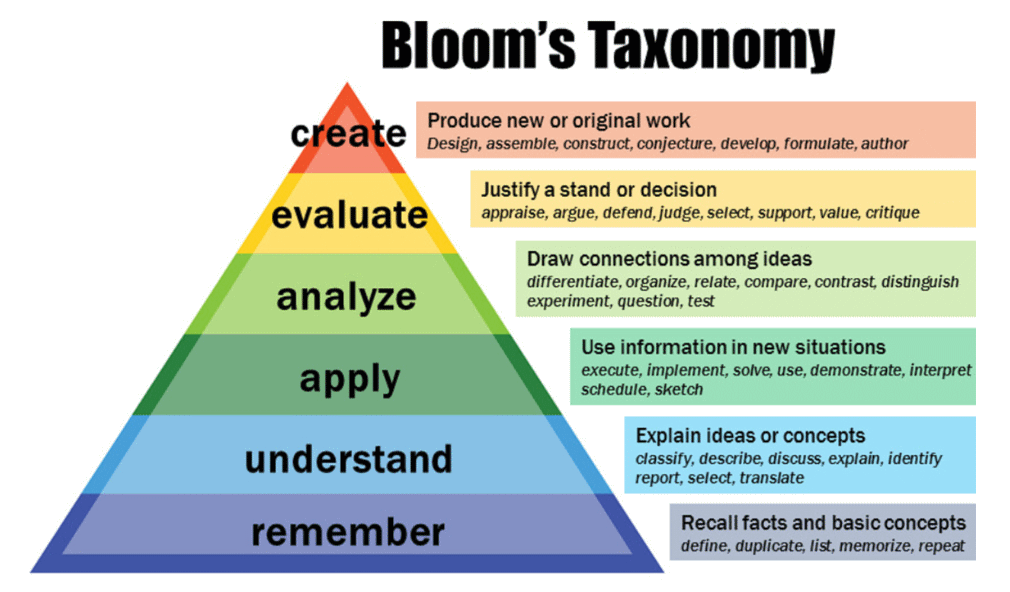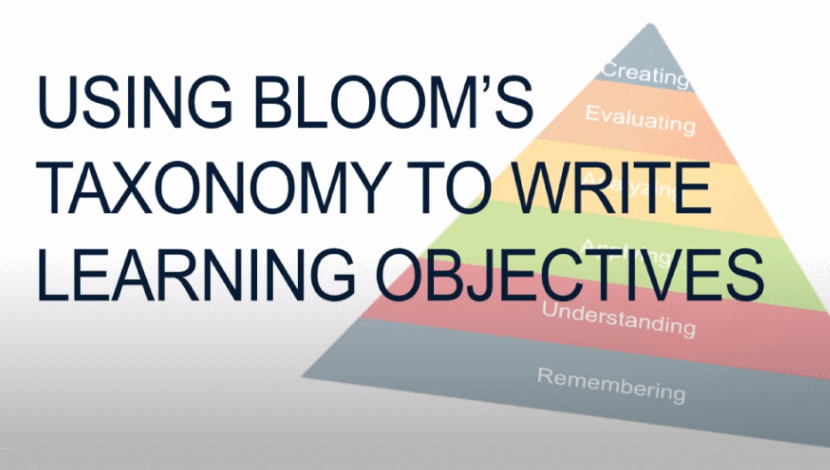Bloom's Taxonomy Action Verbs

Bloom's Taxonomy is a classification of the different objectives and skills that instructors set for their students, which are known as learning objectives. In 1956, Benjamin Bloom, an educational psychologist at the University of Chicago coined a categorization of educational goals. The framework consisted of 6 major categories: Knowledge, Comprehension, Application, Analysis, Synthesis and Evaluation:
The categories were revised in 2001 to include the following six levels of learning:
- Remember: Recall facts and basic concepts (Action verbs include: define, duplicate, list, memorize, repeat, state)
- Understand: Explain ideas or concepts (Action verbs include: classify, describe, discuss, explain, locate, recognize, report, select, translate)
- Apply: Use information in new situations (Action verbs include: execute, implement, solve, use, demonstrate, interpret, operate, schedule, sketch)
- Analyze: Make connections among ideas (Action verbs include: differentiate, organize, relate, compare, contrast, distinguish, examine, experiment, question, test)
- Evaluate: Justify a stand or decision (Action verbs include: appraise, argue, defend, judge, select, support, value, critique, weigh)
- Create: Produce new or original work (Action verbs include: design, assemble, construct, conjecture, develop, formulate, author investigate)
When developing learning objectives, start by considering the level of learners in your course. First year students may be at a starting point of building unconditional knowledge, whereas older students should be able to master higher-order learning objectives.
Consider the following about your students when designing your course:
- Before they understand a concept, students must remember it.
- For students to be able to apply a concept, they first have to understand it.
- In order to evaluate a process, they first have to analyze it.
- To create an accurate conclusion, students would have to have completed a thorough evaluation.
The following video explains the Bloom's Taxonomy six levels of learning and how to use the Bloom's Wheel to write specific, measurable, and observable learning objectives using Bloom's Taxonomy.
The above Bloom’s Taxonomy graphic is created by Vanderbilt University Center for Teaching and released under a Creative Commons Attribution license.

